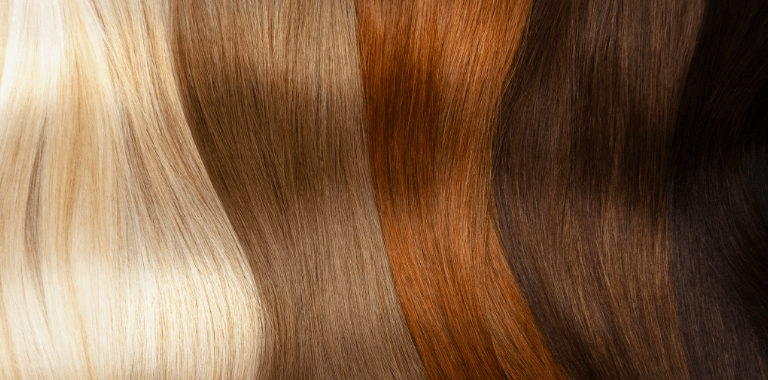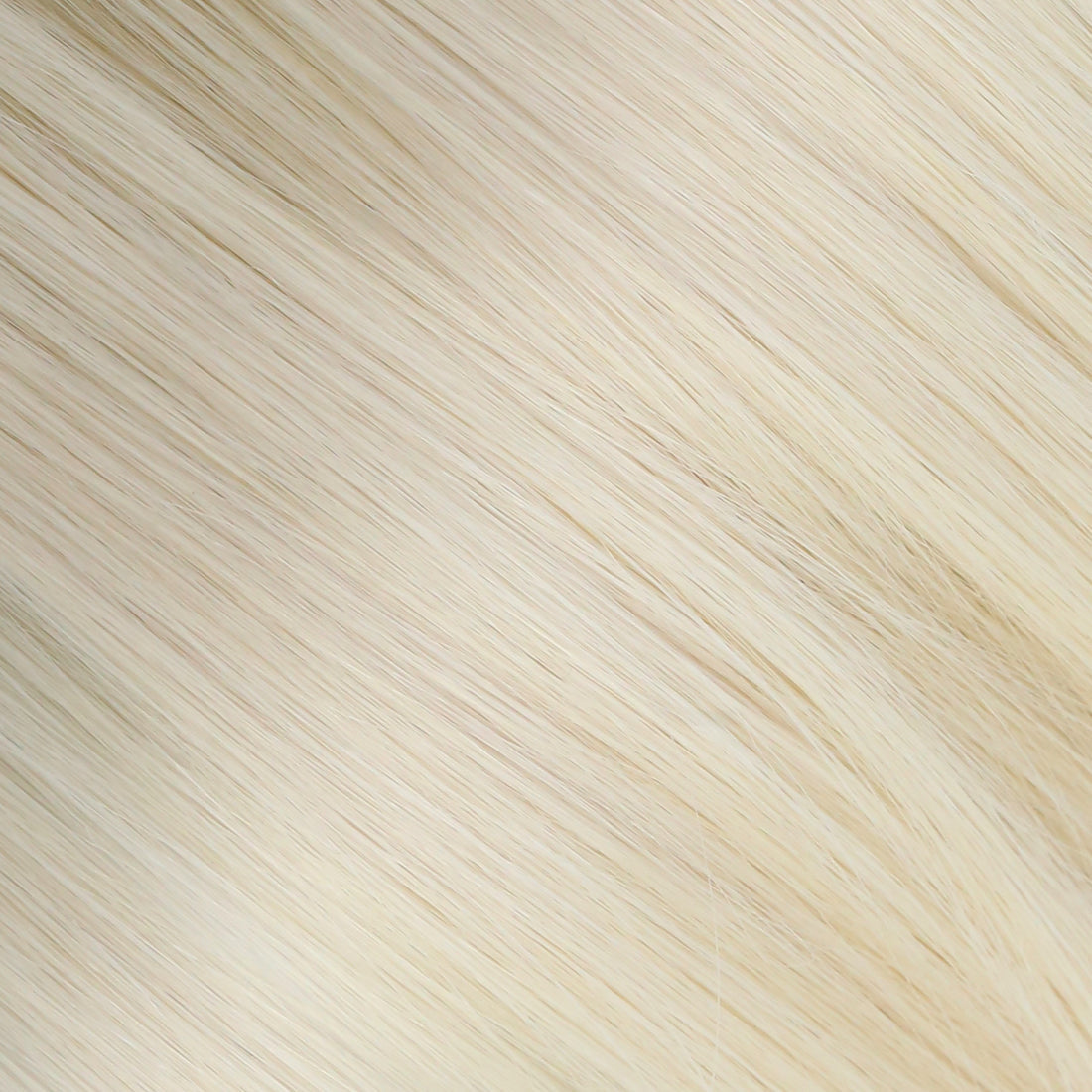Wondering if clip-in extensions are bad for your hair? Learn the truth from experts and uncover tips on how to use them without causing damage.
Clip-in hair extensions, a favored choice for boosting hair length and volume, have soared in popularity. However, this surge has sparked concerns about their potential to harm hair, leading to issues like hair loss or breakage. So, are clip-in extensions bad for your hair? This blog will tackle these apprehensions, aiming to shed light on safe practices for using clip-in extensions effectively and without damage.
What are clip-in extensions?
Before we address the question, "Are clip-in extensions bad for your hair?" it's important to understand exactly what clip-ins entail. Clip-in hair extensions serve as a temporary solution to boost hair's length, volume, and overall style, without the long-term commitment required by permanent extensions. Their ease of use, allowing for quick clipping in and out of natural hair, has made them a favored option for enhancing everyday looks as well as for special events.
Types of clip-in extensions
- Synthetic Hair Extensions: Made from various synthetic fibers, these extensions are affordable and come in a wide range of colors and styles. However, they may not blend as seamlessly with natural hair and typically have a shorter lifespan.
- Real Hair Extensions: Crafted from human hair, these extensions offer a more natural look and feel. They can be styled, dyed, and treated just like your own hair, making them a preferred choice for a seamless blend.
Synthetic hair extensions vs. human hair extensions, how to choose? This ultimate guide to synthetic vs human hair extensions will help you.
Application and styling of clip-ins
Clip-in extensions are applied by sectioning off natural hair and securely attaching the clips close to the root. They can be styled using heat tools and products, just like natural hair, offering versatility in hairstyles. Proper application and removal are key to minimizing any potential damage to the hair and scalp.
What benefits clip-in extensions have
Clip-in hair extensions are celebrated for their ability to transform hair instantly and offer various advantages over other hair enhancement methods. Here are some of their key benefits:
- Instant Length and Volume
Clip-in extensions provide an immediate solution for those looking to add length and volume to their hair. Ideal for special occasions or daily enhancement, they can dramatically change your look in minutes.
- Versatility in Styling
With clip-ins, you have the freedom to experiment with different hairstyles. Whether you're aiming for a glamorous look for an event or just adding extra volume for your day-to-day style, clip-ins can accommodate a wide range of styling preferences.
- No Long-term Commitment and Minimal Maintenance
A key benefit of clip-in extensions is their flexibility. Easily removable, they offer the freedom to change your look without a lasting commitment. This feature, combined with their ease of care, makes them an attractive option for those seeking convenience alongside versatility in their hair styling routine.
- Cost-effectiveness
When it comes to affordability, clip-in extensions stand out. They are more budget-friendly than salon-applied extensions, such as tape-ins or sew-ins, providing a cost-efficient route to a luxurious hairstyle without the professional price tag.

Are clip-in extensions bad for your hair?
Now, we move to what concerns us: Are clip-in extensions bad for your hair, and what damages could they cause? While clip-in hair extensions offer many benefits, improper use or overuse can pose risks to your hair health:
1. Traction Alopecia
Traction Alopecia is a form of hair loss caused by constant pulling or tension on the hair roots over an extended period. Clip-in extensions, if attached too tightly or worn excessively, can exert undue stress on hair follicles. This stress may lead to weakened roots and eventually cause hair to fall out, particularly in areas where the clips are frequently placed.
2. Breakage and Stress
The clips from hair extensions can also put significant stress on natural hair and its roots. Continuous pressure and pulling from the weight of the extensions can lead to breakage, especially if the natural hair is fine or fragile. Regularly placing clip-ins in the same spots can exacerbate this issue, resulting in thinning hair and weakened strands.
3. Scalp Issues
Clip-in extensions can sometimes cause discomfort, such as headaches from the added weight, or irritation at the clip sites. For individuals with sensitive scalps or pre-existing conditions like dermatitis, extensions may aggravate these issues, leading to further discomfort or scalp problems. Proper care, hygiene, and giving your scalp breaks between uses can help mitigate these risks.

How to minimize potential damage of clip-ins
To enjoy the benefits of clip-in extensions without compromising the health of your hair, consider these essential tips:
Choosing the right clip-in extensions
- Quality and Weight:Extensions that are too heavy can exert undue stress on your hair, risking damage and discomfort. Opting for high-quality clip-ins, especially those crafted from real hair, can ensure a more natural integration with your hair and reduces the potential harm.
- Match Your Hair Type:Ensure the extensions match your hair type in texture and color. This not only makes them look more natural but also prevents over-styling, which can lead to damage.
Proper Application
- Section Your Hair:Start by sectioning your hair horizontally. Work from the bottom up to ensure even distribution and reduce tension on any single part of your scalp.
- Secure Clips: Open the clips on your extensions and secure them close to the roots of your sectioned hair. Be careful not to clip them too tightly, which can pull on your hair and scalp.
- Blend with Natural Hair: After applying, gently comb through your hair and the extensions to blend them. This minimizes tangles and distributes the weight evenly.
Maintenance and Care
- Regular Cleaning:Clean your extensions regularly following the manufacturer's instructions. Use gentle, sulfate-free shampoo to avoid drying them out.
- Proper Storage: Store your extensions in a cool, dry place away from direct sunlight. Hang them or lay them flat to prevent tangling and maintain their shape.
- Gentle Styling:Avoid excessive heat and styling products. When using heat tools, apply a heat protectant to both your natural hair and the extensions.
Limit Usage
- Give Your Hair a Break: Regularly give your hair and scalp a rest from the extensions to prevent stress and allow your scalp to breathe. This is especially important if you wear extensions frequently.
- Professional Consultation:For those who use extensions regularly, consulting with a hair care professional can provide personalized advice to minimize damage and maintain healthy hair.
By following these tips, you can enjoy the aesthetic benefits of clip-in hair extensions while preserving the health and integrity of your natural hair.
If you’re a DIY lover, here is a DIY guide on how to make your own clip-in hair extensions step by step.

Alternatives to clip-in hair extensions
Clip-in hair extensions are a convenient and temporary method for enhancing the volume and length of your hair, offering easy application and removal. However, for those seeking different hair enhancement solutions, a wide array of alternative methods and products are available. Each of these alternatives presents its own unique set of benefits and factors to consider, catering to diverse needs and preferences in hair styling and care.
1. Tape-In Extensions
- Pros:Tape-ins are semi-permanent extensions that are bonded to natural hair using adhesive tape. They lie flat against the head, offering a more natural look, and can last for 4 to 8 weeks. They're relatively quick to apply and remove by a professional.
- Cons: The adhesive can cause damage if not removed properly. They require regular maintenance appointments and can limit hair washing and styling options.

2. Weft Extensions
- Pros: Weft hair extensionsare strands of hair sewn onto a strip or "weft," which can be applied in various ways, including being sewn into braided hair, making them versatile for different hair types. They are known for their durability and longevity, providing a semi-permanent hair volumizing and lengthening solution that's especially well-suited for those with thick, coarse hair.
- Cons: When sewn in, the braids required for weft extensions can be tight and uncomfortable, putting strain on the scalp that may lead to hair loss over time. Additionally, the process of sewing the wefts into the braids is intricate, requiring time and the expertise of a professional stylist for proper application and removal.

3. Micro-Link Extensions
- Pros: Micro-links, or micro-beadsor i-tip extensions, are applied by attaching small wefts of hair to small sections of natural hair with a silicone bead, then clamped shut. They can last up to 4 months and are adjustable, reusable, and less damaging if maintained properly.
- Cons: Incorrect application or over-tightening can lead to breakage and hair loss. They require professional upkeep and may not be suitable for fine hair.

4. Non-Extension Alternatives
For those looking for temporary or less permanent ways to add volume and length without the use of traditional extensions, consider:
- Hairpieces and Toppers: Great for targeted volume, particularly at the crown, without the full coverage of a wig.
- Wigs: Offer a complete style change with minimal risk to your natural hair, available in synthetic and real hair options.
- Hair Thickening Products: Volumizing shampoos, conditioners, and styling products can add temporary fullness and body to your hair.
Every alternative method offers distinct advantages, enabling individuals to select the most suitable option according to their hair type, lifestyle, and aesthetic objectives. Whether the goal is a temporary enhancement for a special event or a more lasting approach for daily styling, a variety of choices are available to suit different needs and preferences.
Use your clip-in extensions safely
So, are clip-in extensions bad for your hair? Not with proper selection, application, maintenance and care. Clip-in hair extensions offer a versatile and convenient way to instantly add length and volume to your hair, providing a temporary solution that can be easily managed at home. When used correctly, clip-ins can be a safe and effective way to enhance your look. For those considering hair extensions, consulting with a hair care professional is crucial to choose the most suitable method that aligns with your hair health and styling needs.












